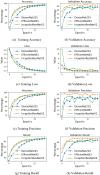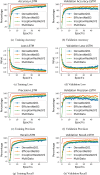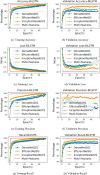Multiple model visual feature embedding and selection method for an efficient pest classification supporting precision agriculture
- PMID: 40877365
- PMCID: PMC12394682
- DOI: 10.1038/s41598-025-16942-1
Multiple model visual feature embedding and selection method for an efficient pest classification supporting precision agriculture
Abstract
Agriculture 5.0 is a principal economic activity in the world with major workforce dependent crops cultivation. An automated system for crops field insect pest identification can help decrease labour, while also improving the speed and precision in compared to manual methods. Less computation and memory systems are getting utilized for remote deployments of classification systems. In this paper, efficient pretrained multiple deep learning models based visual feature extraction and Linear Discriminant Analysis (LDA) based feature selection to provide high efficacy with light resource requirements. This proposed approach also able to handle large number of classes. To achieve this, diverse pest datasets were combined including 9 and 12 classes respectively and the utilized combined dataset contains total 19 classes. Methodology of proposed system included the selection of multiple pretrained models including DenseNet201, EfficientNetB3 and InceptionResNetV2 based on less memory and less parametric requirements. The second last layer of mentioned models have been utilized for selection of features as DenseNet201, EfficientNetB3 and InceptionResNetV2 resulted 1920, 1536 and 4608 accordingly. The extracted features combined and selected using LDA according to the number of classes. At end a basic light dense neural network have been deployed for classification. This makes a low resource and high efficacy pest classification model for higher number of classes. The results obtained by proposed technique are 99.99% Accuracy, 100% validation, 99.99% Recall and negligible Loss. Further the proposed system has been analysed and compared with benchmark approaches including transfer learning and single model feature extraction and selection approach. The main advantage of our proposed hybrid feature selection is that it makes the classification process lighter because it involves selecting relevant features from the existing dataset without training additional models, whereas transfer learning typically involves retraining or fine-tuning pre-existing models, which can be more computationally intensive. Overall the proposed system and approach resulting higher results with lighter process resources that fitted better in the development of domain of precision agriculture.
Keywords: Crop protection; Feature selection; Pest classification; Precision agriculture; Pretrained deep learning; Smart farming.
© 2025. The Author(s).
Conflict of interest statement
Declarations. Competing interests: The authors declare no competing interests.
Figures







References
-
- Kaur, H. J. & Himansh, H. The role of internet of things in agriculture. In: Proceedings–International Conference on Smart Electronics and Communication, ICOSEC 2020, 667–675 (2020).
-
- Anand, A., Trivedi, N. K., Gautam, V., Tiwari, R. G., Witarsyah, D. & Misra, A. Applications of Internet of Things(IoT) in agriculture: The need and implementation. In: Proceedings–International Conference Advancement in Data Science, E-Learning and Information Systems, ICADEIS 2022, 1–5 (2022).
-
- Upadhyay, N. & Gupta, N. A survey on diseases detection for agriculture crops using artificial intelligence. In: 2021 5th International Conference on Information Systems and Computer Networks (ISCON), 1–8 (2021).
-
- Fountas, S. et al. Agriculture 5.0: Cutting-edge technologies, trends, and challenges. IT Prof.26, 40–47 (2024).
-
- Victor, N. et al. Remote sensing for agriculture in the era of industry 5.0 & #x2013; a survey. IEEE J. Sel. Top Appl. Earth Obs. Remote Sens.17, 5920–5945 (2024).
MeSH terms
Grants and funding
LinkOut - more resources
Full Text Sources

